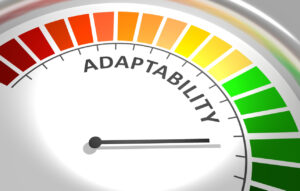PR bad habits – where they come from and why media is pissed
PR has a PR problem, and according to our journo counterparts, we’re all guilty.

Lindsey Bradshaw is a freelance PR pro working with B2B tech startups in AdTech/MarTech, cloud, data/analytics, and AI.
If you take a scroll through LinkedIn or any other social media site for that matter, PR “bad habits” are killing our relationships with media, who aren’t shy about vocalizing their frustrations. And it’s blowing our shot at ever getting the coverage we crave for clients.
“I think most reporters view PR as spray-and-spray salespeople vs trusted resources,” said Parry Headrick, founder at Crackle PR. “And some of that bad rap is earned by tone-deaf PR people who don’t do the proper research or tailor their pitches.”
We’ve all been there at one point in our career. Doing things like:
- Using industry jargon, bad grammar, and typos – so far as including the wrong reporter’s name.
- Overpromising and underdelivering with media, such as offering a customer you can’t provide.
- Pitching news that isn’t news or pitching a reporter on something they clearly do not cover.
- Sending the same pitch to multiple recipients is just spam.
- Asking for changes to an article that are beyond fact-checking.
Why are these things happening? Who’s teaching these bad habits, or where do they come from?
Media relations is a junior PR pro’s job, plain and simple. Senior executives work with clients on strategy and when urgent projects reveal themselves, such as crisis communications. A lot of clients don’t want to hear that. And the same could be said for most journalists who, like clients, prefer to work with more strategic PR pros on the regular.
And with junior PR pros come mistakes. It’s inevitable.
“What I’ve seen, especially with agencies, is lack of training/development for newer PR pros,” said Michelle Garrett, author of B2B PR that Gets Results and owner of Garrett Public Relations.
“I think agencies (or anyone who hires a new PR pro) need to remember that these folks may not have a lot of hands-on experience,” said Garrett. “So, to plop them into a role and just expect that they know how to do it is not realistic. When I worked at an agency, I saw this happen. They had NO IDEA how to effectively pitch journalists. It was terribly stressful for them.”
In my 16-year career, I’ve learned (and had to break) my fair share of bad habits. If you follow me on LinkedIn, you know I “grew up” in PR working with B2B tech startups and in a boutique agency setting. As Garrett put it, I was “plopped” down to pitch on my first day. While I was ultimately successful after an incredibly stressful first day, it was very much a sink-or-swim culture and the turnover at our agency was bananas.
I’ve worked in mid-size and large agency settings, as well as multiple in-house environments. I’ve found that in corporate settings, bad PR practices run rampant, but office politics and culture prevent anyone from stepping in (or up) and saying anything. There are junior staffers teaching entry-level employees with zero to minimal oversight.
“Practices like mass pitching – pulling a random list of hundreds of journalists from a media database then spamming out the same pitch to ALL of them – are sometimes encouraged. Who learns anything from that?” said Garrett.
“Corporate speak is the worst PR habit I’ve seen, myself included,” said Rachel Fukaya, a communications leader at Textio. “Corporate speak makes us look totally out of touch with how people communicate and relate to each other. I see press releases from companies like Salesforce and Workday and I can’t even tell you what they’re announcing or why it matters. AI platforms like ChatGPT and Gemini are only going to make corporate speak worse.”
Is your company or agency responsible for training and career development?
At my first agency, lack of formalized training and mentorship led me into the role of director of continuing education – a completely new position for the company. With this hat, I introduced the agency’s first mentor/manager program, coordinated monthly journalist lunch & learns, and developed our agency’s repository of digital “how-to” assets, a collection of shared agency-approved resources that outline PR best practices for daily projects including building media lists, pitching media, press releases, crisis communications plans, planning and reporting, and more.
“Of course, employers need to give you some level of training, especially entry-level roles, but PR pros are also accountable for getting the training we feel we need, Fukaya said. “Because we all require different skills at different times. It’s important to always be learning and developing ourselves in and outside of work.”
At the end of the day, PR bad habits are plaguing our industry and journos are pissed. They’re reactive. And they’re putting PR pros on blast.
“PR pros need to call out the worst among us by consistently education folks about ‘what to do’ versus ‘what not to do.’ We need to acknowledge our faults as an industry and elevate those committed to doing our craft the right way,” said Headrick.
Just as we’d react for a client, the state of relationships with the media is a PR problem that needs solving. Outnumbering journalists 6:1, it’s our job as PR professionals to hold our colleagues accountable. To voice our concerns over jargon-full writing, inappropriate pitching techniques and other ugly PR practices. It’s also on us to educate our journalist friends on all facets of PR, beyond media relations.
“From the PR side, being better at pitching would go a long way. Do more research, be better at targeting the right journalists with the right story. And for god’s sake, just get to the point,” said Scott Merritt, founder and president at Strategic Global Media. “We all need to be more respectful of the other. We all need to recognize that we’re in this together, and that with the right amount of empathy we can help one another do our jobs better.”






